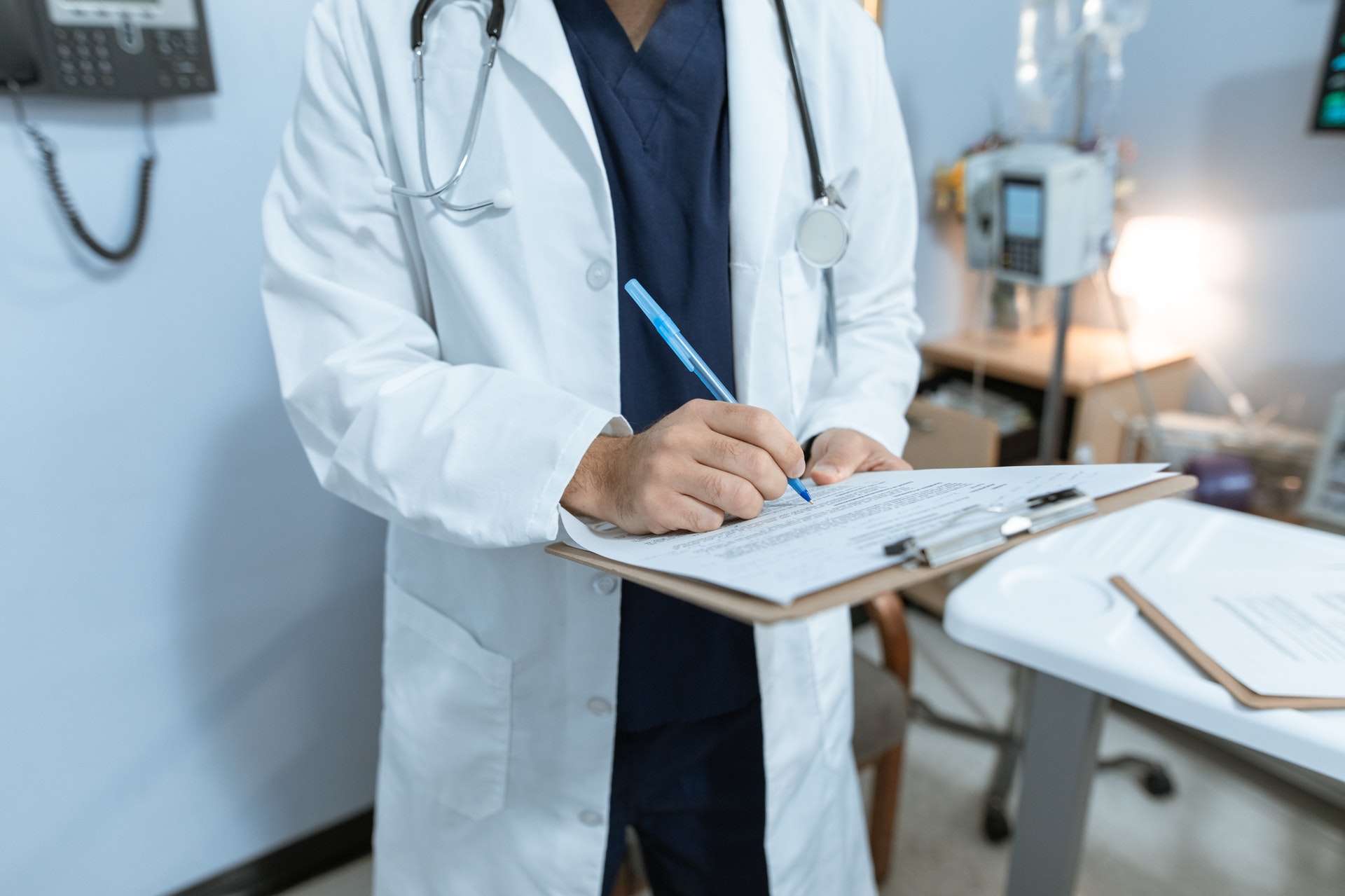Contact info@sofpromed.com to learn more about how to prepare for an FDA clinical site inspection
You are a hospital or clinic participating in a clinical trial and one day two officers from the US Food and Drug Administration (FDA) arrive at your facility unannounced. How would you react? Would you be surprised? Would your knees go weak and your stomach turn? No, because you know that the FDA regularly inspects clinical trial sites, whether as part of routine inspections or in response to a complaint, and you are prepared. You follow protocols, care about participant safety, and keep good records. You are ready.
But if you are still nervous, keep reading for more general recommendations on preparing for an FDA clinical site inspection.
What Is an FDA Clinical Site Inspection in the Context of a Clinical Trial?
When a drug is being studied for efficacy and safety, at some point it has to be tested on humans. These trials take place in clinical settings such as hospitals and clinics where people who could benefit from the medicine are regularly treated.
During a clinical site inspection, FDA inspectors are on site at the clinical facility to examine both the documents relating to a specific study and the facility itself. They also talk with the investigator and other staff. They want to see that the study is being conducted and documented consistently, accurately, ethically, legally, and according to the study protocol.
Why Does the FDA Carry Out Inspections at Clinical Trial Sites?
The FDA is the entity in the United States entrusted with ensuring that new drugs are safe and effective, so they have a deep interest in the reliability of clinical trials. In the FDA’s own words, it inspects clinical trial sites “to protect the rights, safety, and welfare of research study participants, verify the accuracy and reliability of study data, and assess compliance with FDA regulations for the conduct of clinical trials.” [1]
The studies undertaken by these sites are critical in determining the efficacy and safety of a new drug and can also have a serious impact on the lives of trial participants.
The FDA is responsible for ensuring that the data coming out of the study is of the highest scientific standard; in other words, the information must be accurate, verifiable, and reproducible.
In addition, the FDA verifies that the study is being conducted ethically and safely. This includes not only the informed consent of participants but also every other aspect of the study from the investigator’s relationship to the sponsor, to financial arrangements, to the qualifications and training of additional staff, and to how adverse events are handled.
While many people may be involved in a clinical trial, the investigator is the one who has the last word. The inspectors, therefore, focus on the work of the investigator, including how and to whom he or she delegates aspects of the study.
What Are Some Factors That May Trigger FDA Inspections at Clinical Trial Sites?
A complaint made to the FDA about the study may seem like the most obvious reason for an inspection, but this is not the case. The FDA conducts hundreds of clinical trial site inspections each year and 80 percent are classified as routine. Most clinical trial inspections are triggered by filing a New Drug Application (NDA) or a marketing application with the FDA.
There are also several other factors that will make it more probable for a site to be inspected.
Trials with a high number of participants are more likely to be targeted for an inspection, as well as trials of drugs related to diseases and health issues of greater public health interest at the time. If you are conducting a trial on a drug to treat or prevent Covid-19, for example, there is a higher probability of being inspected.
If a clinical site is conducting a study in an area outside its field of specialization, it is also likely to be inspected. The FDA may wonder if the clinic is capable of handling such a trial and of ensuring the safety of participants, or if the arrangement with the sponsor is ethical.
If a clinical site is reporting significantly better efficacy and notably fewer adverse effects than other sites studying the same or a similar drug, this will also act as a red flag to the FDA. This also applies to surprising laboratory results compared with other investigators examining the same drug.
Another circumstance that gets the FDA’s attention is having an unusually high number of participants with the same disease state for the area or practice setting.
What Documents Are Normally Reviewed by FDA Inspectors?
Investigators will require all the documentation related to the study.
As the inspection proceeds, they will also request the following documents:
- The original protocol and any amendments to the study
- Resume of the investigator
- Correspondence with the IRB, including approval documentation and the final report
- Informed Consent form, approved by the IRB
- IRB-approved recruitment material
- All correspondence with the sponsor
- Financial disclosure statement
- Staff resumes and licenses
- Staff training records
- Monitor sign-in log
- Laboratory certifications
- Drug accountability records
- Each subject’s signed informed consent
- A list of additional studies in which the investigator and study coordinators are currently involved
Reviewing these documents is key to the inspection, but FDA inspectors will dedicate most of their time to reading subject case histories. Their aim is to examine the case histories of those subjects involved in all stages of the trial —beginning, middle and end— to document that protocol was followed throughout the study.
General Recommendations and Guidelines to Get Ready for an FDA Inspection
Inspections can take place unannounced, but the FDA prefers to call ahead of time and arrange a date to begin the inspection. They will tell you which study they are inspecting and what documents to have ready. They intend to guarantee that personnel and documentation will be available to them once they are on site, in case files have to be brought from storage to another location, for example, or the investigator is at a conference. Nevertheless, the advanced warning is minimal. FDA inspectors will be expecting you to welcome them on site within three to five business days. At most, they will wait for two weeks.
With this in mind, the best way to prepare for an FDA inspection is to run the clinical trial as if the FDA were to inspect the next day. If a site follows protocols and best practices consistently, there will be no need to scramble as the inspectors walk down the hall.
There are also a few things to do in immediate preparation for an FDA inspection.
- The investigator should be prepared to explain how he or she came to conduct this clinical trial and provide an overview of the study.
- Have the lab tidy. The inspectors will look for good lab practices and that the product is being stored according to protocols. They will also verify that the product is being separated according to dosage or other factors in the protocol.
- Inform the IRB and the sponsor of the inspection. The sponsor is allowed to be on site while the inspectors are there, but the FDA will need to interact mostly with the investigator and other clinical site staff.
- Prepare staff to interact with the investigators. It is better to be polite, friendly and helpful, but not to offer additional information from what the inspectors ask for. It has happened that staff or an investigator have offered more information than the inspectors sought, thinking to further prove their good practices; however, by doing this, they inadvertently have exposed problems or mistakes that would have otherwise gone unnoticed.
- Most likely, the FDA inspectors will offer their credentials upon arrival, but if not, make sure that staff members have the means to see both the inspectors’ badges and the document FDA 482, which authorizes these inspectors to undertake this examination. Giving the inspectors access to the trial documents without first verifying their authority would be a first mark against the trial site.
Does the FDA Conduct Inspections at Hospitals Located Outside the United States?
Yes, it does. If a sponsor is seeking FDA approval of a drug and conducting clinical trials outside the United States, these sites are subject to inspection. If the FDA decides to inspect a foreign clinical trial site (in Europe for example), it will usually do so when the study forms part of a marketing application and provides critical data for product approval.
Who Can Help Me Prepare for an FDA Inspection?
Companies specialized in working directly with clinical trial sites to help manage studies (e.g. CROs) make great partners in ensuring an FDA inspection is not the demise of a clinical trial site. They can help with site management, monitoring, and data management. These specialists help clinical sites stay FDA-compliant and organized enough to prove it. Additional expertise in this area can prevent a clinical trial from being derailed by lack of oversight, mismanagement, ignorance of regulations, lack of staff, or inexperience.
More than simply ensuring a favorable outcome of an FDA site inspection, they serve as a quality control department to help the clinical site maintain the highest standards and complete a successful trial.
Contact info@sofpromed.com to learn more about how to prepare for an FDA clinical site inspection
References:
[1] US Food and Drug Administration, Information Sheet Guidance For IRBs, Clinical Investigators, and Sponsors FDA Inspections of Clinical Investigators https://www.fda.gov/regulatory-information/search-fda-guidance-documents/clinical-trials-guidance-documents









